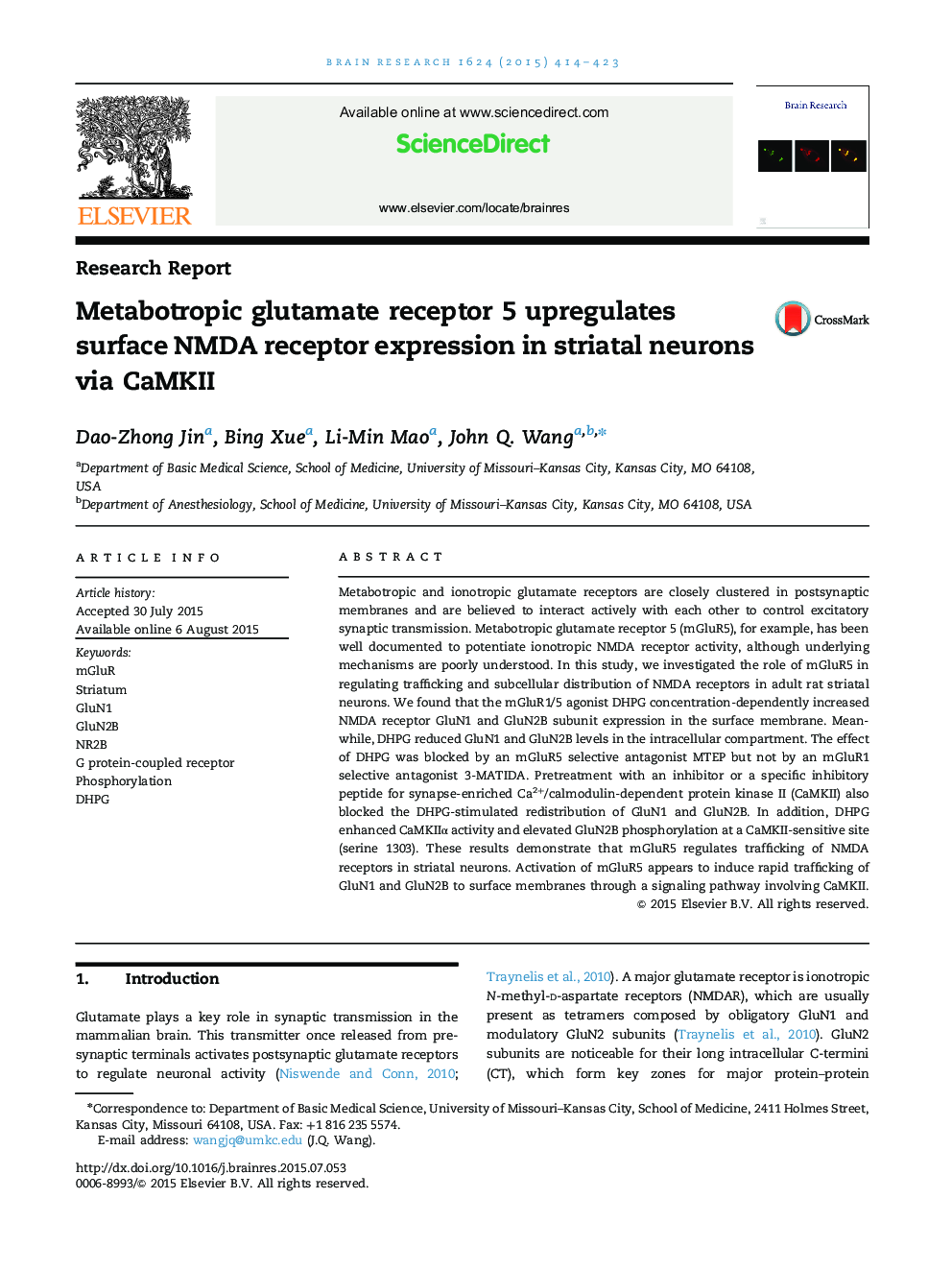| Article ID | Journal | Published Year | Pages | File Type |
|---|---|---|---|---|
| 6262868 | Brain Research | 2015 | 10 Pages |
â¢Activation of mGluR5 enhances surface expression of NMDA receptors.â¢Activation of mGluR1 has no impact on surface NMDA receptor expression.â¢Synapse-enriched CaMKII links mGluR5 to NMDA receptors.
Metabotropic and ionotropic glutamate receptors are closely clustered in postsynaptic membranes and are believed to interact actively with each other to control excitatory synaptic transmission. Metabotropic glutamate receptor 5 (mGluR5), for example, has been well documented to potentiate ionotropic NMDA receptor activity, although underlying mechanisms are poorly understood. In this study, we investigated the role of mGluR5 in regulating trafficking and subcellular distribution of NMDA receptors in adult rat striatal neurons. We found that the mGluR1/5 agonist DHPG concentration-dependently increased NMDA receptor GluN1 and GluN2B subunit expression in the surface membrane. Meanwhile, DHPG reduced GluN1 and GluN2B levels in the intracellular compartment. The effect of DHPG was blocked by an mGluR5 selective antagonist MTEP but not by an mGluR1 selective antagonist 3-MATIDA. Pretreatment with an inhibitor or a specific inhibitory peptide for synapse-enriched Ca2+/calmodulin-dependent protein kinase II (CaMKII) also blocked the DHPG-stimulated redistribution of GluN1 and GluN2B. In addition, DHPG enhanced CaMKIIα activity and elevated GluN2B phosphorylation at a CaMKII-sensitive site (serine 1303). These results demonstrate that mGluR5 regulates trafficking of NMDA receptors in striatal neurons. Activation of mGluR5 appears to induce rapid trafficking of GluN1 and GluN2B to surface membranes through a signaling pathway involving CaMKII.
